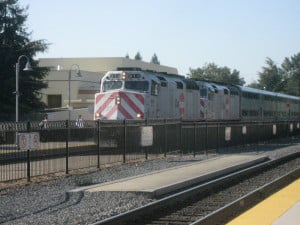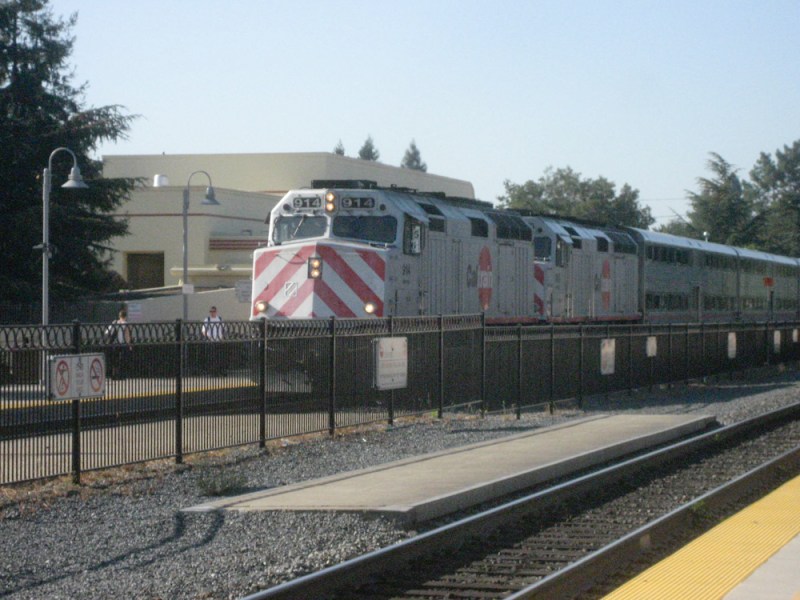After the federal government approvedthe first leg of California’s high-speed rail project in mid-September, controversy has surrounded the project on the Peninsula.

Most of the funding in a spring bill to begin construction on the high-speed rail line will go to construction of the first Central Valley segment, but the bill also provides $705 million to electrify Caltrain. These funds will be shifted from the ends of the line to the Central Valley segment if there are cost overruns.
“The last [state] legislation that went through made that decision on the Central Valley, allocating money to the bookends, which means the electrification of Caltrain,” Palo Alto City Councilman Pat Burt said. “That’s our city’s focus right now: how to do a successful modernization of Caltrain, which means electrification, and how do we look at all the impacts and benefits of that project.”
The $69 billion project aims to construct the nation’s first high-speed rail line, connecting Los Angeles to San Francisco. The 800-mile track would stretch through Menlo Park and Palo Alto, affecting 36.2 acres of Stanford-owned land. Although federal and state approval have cleared the way for construction to begin in 2013, pressing budget constraints and an onslaught of lawsuits have local leaders skeptical of the actual progress that will be made on the high-speed rail project.
The City of Palo Alto continues its involvement in litigation against the California High-Speed Rail Authority with regard to the adequacy of its Environmental Impact Report from Merced to San Francisco. Palo Alto City Council Rail Committee Chair Larry Klein doubts the environmental benefits associated with the high-speed rail itself.
“Environmental studies show that the high-speed rail is not environmentally beneficial, because it would require so much concrete and earth moving,” Klein said. “It is true that once it is completed, taking a train would put less carbon dioxide in the atmosphere than flying, but the deficit created during construction would take about 70 years to balance out.”
Klein was also concerned that the rail’s design would lead to the construction of a wall through Palo Alto in order to elevate the track going through the city.
“If the high-speed rail were ever built, we will remain on our guard in anticipation of [them] bring back plans for an elevated structure,” Klein said. “Beyond that, the rest of it seems so far out in the future now that we’re not particularly concerned about it.”
The electrification of Caltrain may pose issues of its own at Palo Alto’s rail-street intersections, which according to Burt are notorious for causing traffic delays.
“The potential impact is if the number of trains per hour goes up significantly at a certain point in town, we have a potential increase in grade crossings,” Burt said. “The biggest concern for the city is that when we get an improved Caltrain, there will be more trains per hour at peak hours.
“We’re already pretty congested at those grade crossings at rush hour with a lot of traffic backup,” he said. “If there are more trains, there will be more backup.”
Members of neighboring communities have also been active in evaluating the high-speed rail project. William Grindley, an Atherton resident and former member of the Atherton Rail Committee, has met with members of the Community Coalition on High-Speed Rail and the civic organization High-Speed Boondoggle, which believes that the California High-Speed Rail Authority has misled voters. Having co-authored 36 reports regarding the financial and operational implications of the high-speed rail project, Grindley is a critic of the “blending” system in which Caltrain and high-speed rail trains share Caltrain’s existing tracks on a system that remains substantially within the existing Caltrain corridor.
“The $69 billion is a marketing gimmick,” Grindley said. “It only gets a rider from somewhere in the San Fernando Valley to San Jose. The $69 billion is also a low-ball estimate, even to construct the illegal ‘blended’ system.”
“Every megaproject exceeds its budget by an average of 45 percent,” he said. “The ridership numbers are phony and have been challenged by experts not paid for by the High-Speed Rail Authority.”
Burt believes the improvement of the Peninsula’s rail system could help to alleviate traffic congestion, some of which is caused by Stanford-related traffic. The University provides Caltrain Go Passes to its employees, an initiative that was recently expanded to include hospital employees.
“We’re a big station [in Palo Alto] and Stanford’s a big part of that,” he said. “As we electrify, we’ll have faster trains that go to more and more locations and transport people more quickly. We have to look at the impact in the context of the community.”
